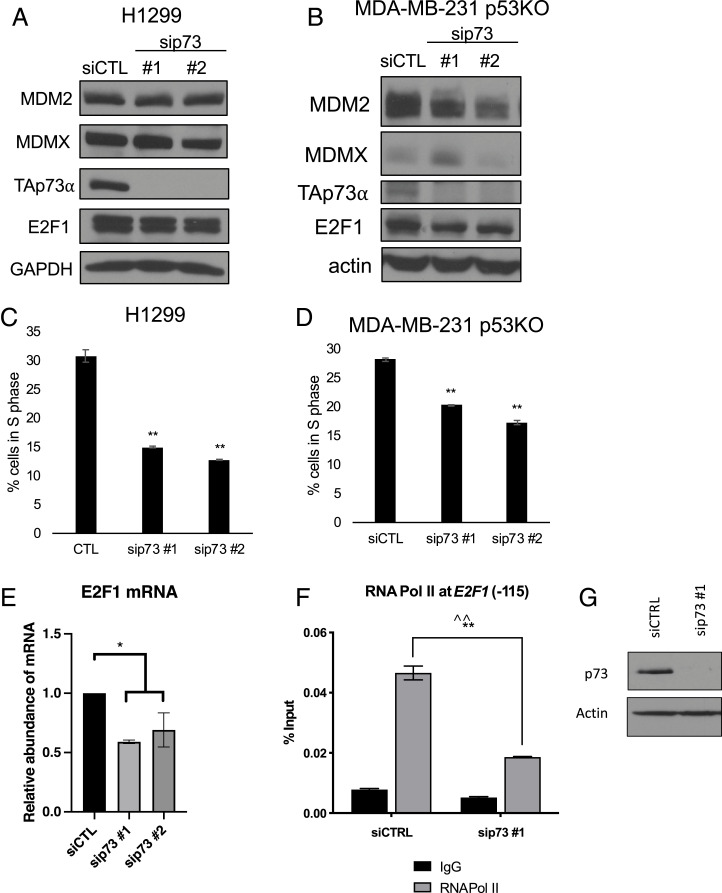Fig. 5.
Ablation of p73 inhibits cell-cycle progression and reduces the E2F1 message. (A–D) H1299 (A and C) and MDA-MB-231 with p53 knocked out by CRISPR-Cas9 (B and D) cells were transfected with sip73 or control siRNA for 48 h. (A and B) Knockdown was verified by immunoblot. (C and D) Cell-cycle distribution was analyzed with PI staining and the percentage of cells in S phase was plotted as a representative of four replicates. (E) E2F1 mRNA was quantified by qRT-PCR. The graph shows the mean of three biological replicates (error bars represent SEM). (F and G) H1299 cells were transfected with control (siCTRL) siRNA or siRNA against p73 (sip73 no. 1). Chromatin was immunoprecipitated with anti-RNA Pol II or IgG control and subjected to qRT-PCR using a primer −115 from the TSS of E2F1. (F) Binding of RNA Pol II to the −115 region of the E2F1 promoter is graphed as a representative of three biological replicates with two different siRNAs against p73. (G) Knockdown was verified by immunoblot. *P < 0.05 (one-way ANOVA), **P < 0.01 (one-way ANOVA), ^^P < 0.01 (Welch’s t test). All data represent at least three biological replicates (error bars represent SEM).

